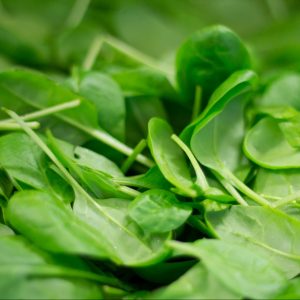 If you’re like many Australian women, chances are at some point in your reproductive life, you’ll be told you’re iron deficient. If this is the case, you might be familiar with the fatigue, shortness of breath, low energy, hair loss and brittle nails that can accompany an iron deficiency. Because of the prevalence of iron deficiency in our society, many of us simply accept this diagnosis as a normal part of being a woman, and diligently take our iron tablets as prescribed. But perhaps we should stop to wonder why we become iron deficient in the first place.
If you’re like many Australian women, chances are at some point in your reproductive life, you’ll be told you’re iron deficient. If this is the case, you might be familiar with the fatigue, shortness of breath, low energy, hair loss and brittle nails that can accompany an iron deficiency. Because of the prevalence of iron deficiency in our society, many of us simply accept this diagnosis as a normal part of being a woman, and diligently take our iron tablets as prescribed. But perhaps we should stop to wonder why we become iron deficient in the first place.
Intake
Of course, the first thing to look at is your dietary intake of iron. Are you eating enough of this crucial mineral everyday? In Australia, the Recommended Dietary Intake of iron for menstruating women is 18 mg per day, while pregnant women need at least 27 mg per day! To give you an idea, a large steak has around 5-6 mg of iron, but we certainly don’t want you eating three steaks a day just to meet your requirements. As women lose blood every month with their menstrual cycle, their iron requirements are more than double that of men!
So what are some good sources of iron? Well, there’s two types of iron: Haeme iron (from animal flesh) and non-haeme iron (mainly from plant foods). Explaining all the nuances between these two types should be a blog post on its own, so for now we’ll just list some of the better sources.
- Haeme Iron: From beef (steak, beef mince etc), pork, turkey, chicken, fish etc.
- Non-Haeme Iron: From things like brown lentils, red lentils, green lentils, black beans, kidney beans, tofu, chickpeas, tahini, cooked dark green leafy vegetables, parsley, almonds, dried apricots etc.
Eating an abundance of these iron rich foods everyday will go some of the way to helping you meet your iron requirements, but if you struggle with iron deficiency, it’s important to consider some of the other factors listed below.
Absorption
So you might be eating enough iron, but are you absorbing enough? Many factors can affect how much iron we actually absorb from our digestive tract, which in turn will affect our iron status. For example:
- Iron from animal foods is absorbed at a much higher rate than that from vegetarian sources. This means people who rely solely on vegetarian iron sources will have a harder time absorbing the iron they consume. It’s also why you can’t directly compare the 2.7 mg of iron in 100 g of spinach to the 2.6 mg of iron in 100 g of steak – the type of iron in the steak will be absorbed better than that in the spinach. Adding a source of vitamin C to your vegetarian iron will help increase your absorption though, whether this be a squeeze of lemon juice, some raw red capsicum or a handful of strawberries.
- Tea and coffee contain tannins which bind to iron and reduce its absorption. This means people who routinely consume a hot cuppa with their meals will absorb less iron than those who don’t.
- The health and function of your gut lining will impact the amount of nutrients you absorb from your digestive tract, as nutrients have to cross this lining to enter the blood. Certain diseases like Coeliac Disease and Crohn’s Disease can damage the gut lining, compromising your absorption.
- Oxalates and phytates are a type of compound found in leafy green vegetables, as well as some legumes, nuts and grains. Both oxalates and phytates bind to iron and can reduce its absorption. Soaking and/or cooking these foods can help reduce the oxalate and phytate content, to minimise the effect. Vitamin C can also help counter the effect.
- Certain minerals like calcium and zinc compete for absorption with iron. This is why you should never take your calcium or zinc supplement at the same time as your iron-rich meal or iron supplement.
- The amount of iron absorbed from the gut is also dependent on how much iron is ingested – The body up-regulates iron absorption when intake is low, and down-regulates absorption if intake is excessive. This is why very large dose iron supplements are not always the answer, as the body will compensate by reducing the percentage absorbed.
Research shows that certain strains of probiotics can help increase iron absorption from the gut, so sometimes we’ll prescribe carefully selected probiotics in conjunction with iron supplementation, to improve absorption. Increasing the acidity of the stomach can also improve iron absorption, so for patients struggling to increase their iron levels despite supplementation, we’ll often look at ways to increase hydrochloric acid production to give absorption an extra boost.
Excretion and Losses
The average woman loses around 40-60ml of blood with each menstrual cycle, which over time, can contribute to or cause an iron deficiency if intake is insufficient to maintain healthy levels. Women with particularly heavy periods or conditions like endometriosis are at even greater risk, as they lose more blood with each period. As naturopaths, we can use herbs and nutritional supplementation to reduce excessive menstrual blood loss, and we encourage all women to speak to their naturopath if they’re experiencing unusually heavy menstruation, or other menstrual irregularities.
Certain parasites in the digestive tract can also increase iron losses, although in Australia, this is rarely the primary cause of a deficiency. Ultimately, if intake and absorption are regularly less than what is excreted, an iron deficiency can develop.
Individual Requirements
When you add all of these factors together, you can see just how individual each of us are in terms of how much iron we need and how much we will absorb. This is why the recommended daily intake may or may not be enough for you. Ultimately, if your blood tests and symptoms suggest you are not getting enough iron, supplementation with the right type of iron may help, as well as addressing some of the factors discussed above.
A quick note on supplementation: If any of these symptoms sound familiar, it is important not to begin supplementing until you have spoken to your naturopath or doctor, and received a true and accurate diagnosis of iron deficiency. Haemochromatosis is a condition in which there is too much iron stored in the body, and ironically, it can have very similar symptoms to iron deficiency. This is why you need a proper diagnosis, before we can determine the right type and amount of iron for your situation, while also investigating what other factors might be at play.

